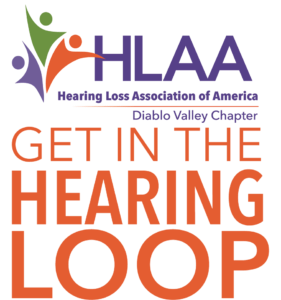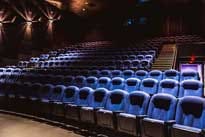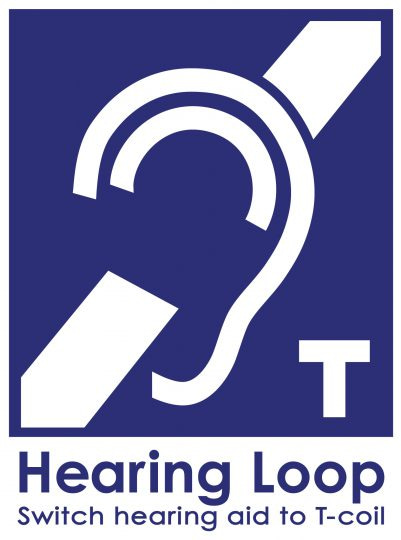 Hearing loss is an invisible disability that impacts daily communication for one in seven people. That number increases to one in three by age 65. Hearing aids have improved dramatically in the last decade, but they are still just that—aids. Those with hearing loss will hear better with hearing aids than without them, but they will still have trouble hearing in many situations.
Hearing loss is an invisible disability that impacts daily communication for one in seven people. That number increases to one in three by age 65. Hearing aids have improved dramatically in the last decade, but they are still just that—aids. Those with hearing loss will hear better with hearing aids than without them, but they will still have trouble hearing in many situations.
Hearing aids work remarkably well for one-on-one conversations, but they don’t restore hearing like glasses restore vision. Many people continue to struggle to hear and understand in church, at the theatre, or in meetings. Travel quickly turns into a stressful and frustrating experience if you miss an announcement for boarding your plane or get off at the wrong station.
For activities like these, hearing assistive technology beyond hearing aids is necessary. Many of those with hearing loss can’t hear in loud and crowded situations because they haven’t heard about assistive technology or how they could benefit from it. Perhaps they see someone with a headphone at the theatre, but don’t know where to find one.
 Because hearing loss seems so common, many individuals who have hearing loss do not consider themselves as a person with a disability. They are unaware that the ADA includes hearing loss and guarantees their rights to communication access.
Because hearing loss seems so common, many individuals who have hearing loss do not consider themselves as a person with a disability. They are unaware that the ADA includes hearing loss and guarantees their rights to communication access.
Many miss out because the availability of the technology and services offered by a facility are not publicized by the venues in their advertising and signs in meeting spaces, concert halls, and cinemas are not large enough, strategically placed, or prominent enough to alert people to the availability of hearing assistive devices.
Many miss out because the front-line staff has not been trained to serve customers with the invisible disability of hearing loss. They don’t know what hearing assistive technology is, how it works, or how to assist a user. Many don’t realize just how dramatic a difference in clarity and understanding assistive technology can make for someone with hearing loss.
 A considerable number also miss out because their hearing care provider may not have counseled them about the most cost-effective system available to them with the best sound reproduction—the telecoils in their own hearing aids. Telecoils are small wire receivers inside most hearing aids and all cochlear implants. Telecoils pick up a magnetic signal and convert it into a sound that is then corrected to correspond to that individual’s audiogram pattern by modern digital hearing aids and sent on to the brain.
A considerable number also miss out because their hearing care provider may not have counseled them about the most cost-effective system available to them with the best sound reproduction—the telecoils in their own hearing aids. Telecoils are small wire receivers inside most hearing aids and all cochlear implants. Telecoils pick up a magnetic signal and convert it into a sound that is then corrected to correspond to that individual’s audiogram pattern by modern digital hearing aids and sent on to the brain.
Surveys have shown (Stika, Ross and Cuevas, 2002) that less than 50 percent of hearing care providers counsel their clients on the use of the telecoils in their hearing aids, and less than a third of providers counsel their clients on the availability and use of hearing assistive technologies in public venues that can supplement their hearing aids. Successful hearing aid use takes time and effort, and it requires a variety of tools and strategies.
To combat this pervasive problem, the American Academy of Audiology, in cooperation with the Hearing Loss Association of America, in 2012 launched Get in the Loop, a national campaign to raise awareness of hearing care professionals and those with hearing loss to the benefits of hearing loops, telecoils, and assistive technology in general. The Sertoma clubs have joined in this national effort to raise awareness. To ensure counseling on hearing loops and telecoils, some states have enacted laws mandating such counseling by hearing care providers. California is not among them.
For additional information, please visit: Loop Contra Costa County
Ann Thomas Hearing Loss Association of America – Diablo Valley Chapter Email: GITHL@hearinglossdv.org
Adapted from an article by Cheri Perazzoli, Director of Advocacy, Hearing Loss Association of America, Washington State Association
Stika, C.J., Ross, M., & Cuevas, C. (2002, May/June). Hearing aid services and satisfaction: The consumer viewpoint. Hearing Loss, 25-31.


Thank you for visiting our site. Did you find what you were looking for? Need assistance? Please contact us.